Go Eco-Friendly in the Kitchen in 5 Easy Steps

by
Roberta Madison
(IC: blogger)
Thismay come as a surprise but when it comes to green proofing your home, thekitchen plays a substantial part. Since this is where we process and prepareour meals, think of the packaging and the appliances we use, and also because –in modern homes – it is where we spend most of our time, we design kitchensaccording to our needs.
Weshould keep in mind though that our choices affect the wider community. Ourfurniture, appliances, and even our food selection may not look much but itdoes send a rippling effect. Thetelltale signs are there: stronger typhoons, floods, and crazy snowstorms.Weather patterns are going haywire because of our modern comforts.
We’renot spoiling the party though. Contrary to popular idea, you can be stylish,enjoy life’s pleasures, and still be conscious about the environment. There’sno need for grand schemes because that would be counter-productive. Below areeasy and very doable suggestions on how to go green in the kitchen.
Reduce.Reuse. Recycle. The first step to going green is to practice thethree R’s. Reduce consumption, reuse/repurpose old things, and recycle rubbish.It helps to set up a recycling center of sorts. It doesn’t need to be anultramodern system, it can be several boxes under the kitchen sink. One forpaper wastes, another for tins, and another for bottles. If possible, keep acompost box in the backyard – or if you live in an apartment, have separatebins for vegetable peelings and other leftovers.
Buylocal products whenever you can. Known as food miles,the term refers to the transportation distance from the time ofproduction/picking to the time it reaches the buyer. Taking into account theenergy used, your groceries do matter a lot.
Replacenon-stick cookware. Instead, go for stainlesssteel, enamel, or cast iron. While there is insufficient data linking cancerwith Teflon, it is best to practice caution and do away with these non-stickpans.
UseLED bulbs for your lighting needs. LED bulbs areslightly more expensive but they last longer and consume less power. LEDtechnology has also seen great improvements the last couple of years. Thesedays, there are LED bulbs that replicate the warm glow of an incandescent.
Similarly,go for appliances with the energy efficient label. As more consumers aredemanding for manufacturer responsibility, electronic kitchen gadgets are nowupgraded to fit energy efficiency standards.
Considerrenewable and sustainable building materials.From countertops and even down to the kitchen floor, earth-friendly optionsinclude cork, concrete, and even bamboo. However, given some issues regardingthe use of volatile compounds in the production of bamboo wood, we recommendcork or concrete instead.
Whilecork is resistant to moisture and mildew, concrete can be as magnificent asnatural stone if handled correctly. The advantage to using concrete is you canalways cover it up with vinyl, linoleum, or ceramic tiles when you get boredwith it.
Fora stylish backsplash, go for glass tiles. Often made from recycled glass, thesesleek tiles give spaces a boost. They are attractive and are a suitable choicefor traditional, modern, and even transitional kitchens.
Forthose of you who do not have an idea on how to go through their kitchenbacksplash projects, seeking the help of expert glasstiles providers, includingGlassTileStore.com, is the wisestthing to do. This way, you won’t be clueless on what are the perfect materialsyou need for your home improvement décor.
Watchhow you transform your modest kitchen into an eco-friendly environment thatwill definitely work into your advantage!
Weshould keep in mind though that our choices affect the wider community. Ourfurniture, appliances, and even our food selection may not look much but itdoes send a rippling effect. Thetelltale signs are there: stronger typhoons, floods, and crazy snowstorms.Weather patterns are going haywire because of our modern comforts.
We’renot spoiling the party though. Contrary to popular idea, you can be stylish,enjoy life’s pleasures, and still be conscious about the environment. There’sno need for grand schemes because that would be counter-productive. Below areeasy and very doable suggestions on how to go green in the kitchen.
Reduce.Reuse. Recycle. The first step to going green is to practice thethree R’s. Reduce consumption, reuse/repurpose old things, and recycle rubbish.It helps to set up a recycling center of sorts. It doesn’t need to be anultramodern system, it can be several boxes under the kitchen sink. One forpaper wastes, another for tins, and another for bottles. If possible, keep acompost box in the backyard – or if you live in an apartment, have separatebins for vegetable peelings and other leftovers.
Buylocal products whenever you can. Known as food miles,the term refers to the transportation distance from the time ofproduction/picking to the time it reaches the buyer. Taking into account theenergy used, your groceries do matter a lot.
Replacenon-stick cookware. Instead, go for stainlesssteel, enamel, or cast iron. While there is insufficient data linking cancerwith Teflon, it is best to practice caution and do away with these non-stickpans.
UseLED bulbs for your lighting needs. LED bulbs areslightly more expensive but they last longer and consume less power. LEDtechnology has also seen great improvements the last couple of years. Thesedays, there are LED bulbs that replicate the warm glow of an incandescent.
Similarly,go for appliances with the energy efficient label. As more consumers aredemanding for manufacturer responsibility, electronic kitchen gadgets are nowupgraded to fit energy efficiency standards.
Considerrenewable and sustainable building materials.From countertops and even down to the kitchen floor, earth-friendly optionsinclude cork, concrete, and even bamboo. However, given some issues regardingthe use of volatile compounds in the production of bamboo wood, we recommendcork or concrete instead.
Whilecork is resistant to moisture and mildew, concrete can be as magnificent asnatural stone if handled correctly. The advantage to using concrete is you canalways cover it up with vinyl, linoleum, or ceramic tiles when you get boredwith it.
Fora stylish backsplash, go for glass tiles. Often made from recycled glass, thesesleek tiles give spaces a boost. They are attractive and are a suitable choicefor traditional, modern, and even transitional kitchens.
Forthose of you who do not have an idea on how to go through their kitchenbacksplash projects, seeking the help of expert glasstiles providers, includingGlassTileStore.com, is the wisestthing to do. This way, you won’t be clueless on what are the perfect materialsyou need for your home improvement décor.
Watchhow you transform your modest kitchen into an eco-friendly environment thatwill definitely work into your advantage!
Enjoyed the project?

Want more details about this and other DIY projects? Check out my blog post!
Published February 28th, 2014 5:11 PM



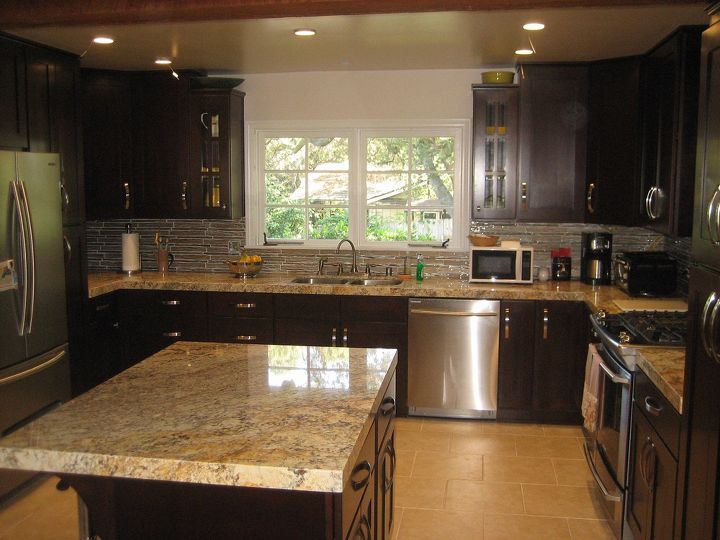
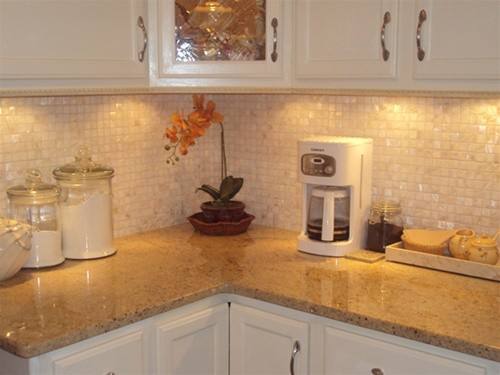


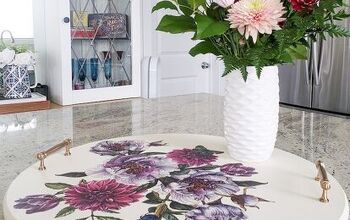




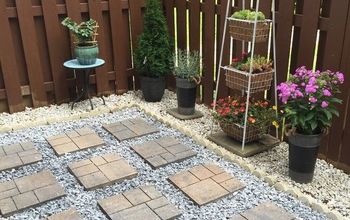
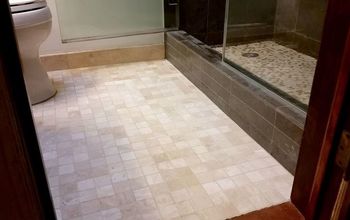


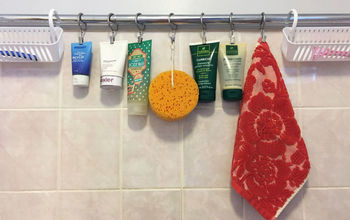
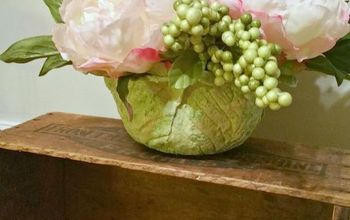






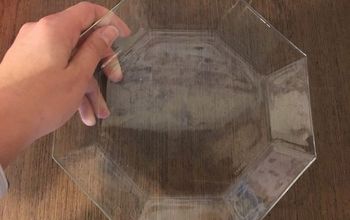
Frequently asked questions
Have a question about this project?